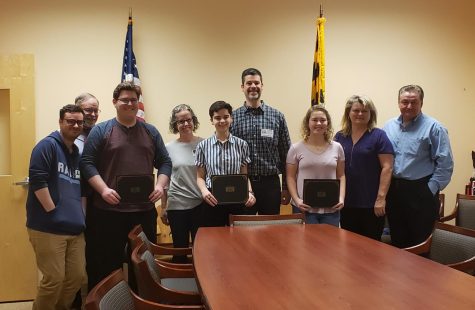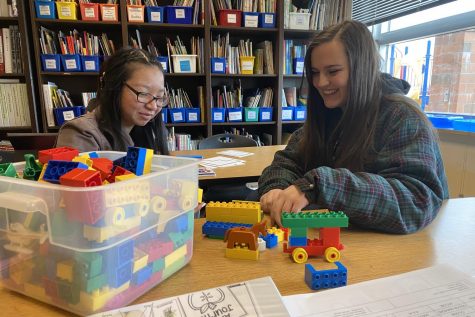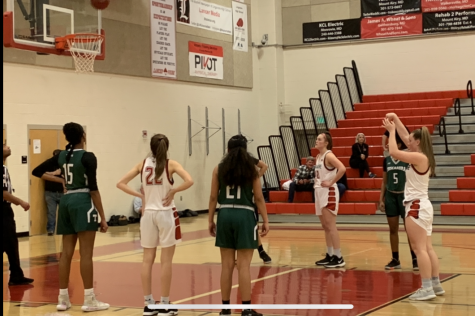Ceramics students begin face casting project: Photo of the Day 5/30/19
Tabitha Knedeisen and Madie Beck face cast Hannah Bowie in Ceramics 2.
May 30, 2019
On May 23, Mr. Christian Madenspacher’s Ceramic 2 students began their face casting projects. The purpose of the project is to create an intricate piece using clay and a plaster cast.
The first step in constructing this piece is creating the cast. To begin the process, the student cuts plaster coated gauze into many pieces that will later be used for the nose, mouth, eyes, chin, etc. Then the student uses Vaseline to coat the volunteer’s eyelashes and eyebrows to ensure easy removal. The gauze strips are then dipped in water and laid over the volunteer’s face in a specific order and placement, covering the entire face except the nostrils. During this time the volunteer has to have their mouth and eyes completely shut and not move to ensure a good cast. The casting process usually requires two students–one to place the gauze the other to smooth them out. Once all the gauze are placed students wait 10-15 minutes to let the plaster dry before removing the cast.
When the project was introduced, some students were eager to be cast, while others weren’t as interested. Among those to quickly volunteer was Class of 2021 member Hannah Bowie.
“I was super excited to be cast. I think it’s a fun, good experience I might not get to experience again,” she said.
Others such as Tabitha Knedeisen were excited for the project but expressed no interest in having their own face cast.
“I think even if your face isn’t being cast, you can still create a really neat mask. I just chose not to get my face cast because I was afraid the mask wouldn’t come off and I would be panicking,” said Knedeisen.
According to volunteer Adam Liston, “It was not scary at all, and it was very easy. I was expecting it to be very uncomfortable, but it wasn’t and it went by fast.”
Once the cast is completely dried out, students use it as a clay mold to incorporate a face into anything they’d like. Students in the past have incorporated the face into vases, tea pots and containers.
“I have my students do this project because I like the duality of it. It allows kids to work with one another and it also is a creative process. I like seeing the masks transformed into unique projects,” said Madenspacher.













